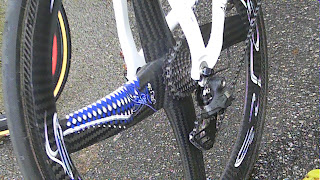‘If you can find meaning in the type of running that you do, then you might find meaning in that other pastime called life.’ ~ BILL BOWERMAN
What would possess a person to rise at dawn, swim, ride, and run almost the entire day – just to earn a medal and a t-shirt? What would entice a person to run a marathon at night, where it is warm and humid and risk heat disorder? What inspires a person to climb Mount Everest – the highest point in the world – and risk life and limb?
On this daily blog, we hope to provide some form of incentive for you to stay active, engaging, interactive and interpersonal with others. We call these abilities and skills – leadership. Leading others, and influencing them in positive ways towards their destiny – known as their potential – is our mission.
When top-blogger and renowned marketing author, Seth Godin proposed in his book and blog to write one blog post a day, everyday for three years, I took up the challenge. It has been almost two years, and it has been a great adventure so far. We have interviewed many amazing, everyday, people who lead day-jobs and also do extraordinary things as their pastimes and pursuits.
Many of us featured on this blog are Everyday People, who fit the wide profile of 20-70 years. Endurance sports are a way of expressing ourselves. We indulge in sports like marathons and triathlons because we can exceed ourselves, define our limits, socialize and enjoy quality life. We learn how to not judge others too readily, for looks can be deceiving. We are encouraged by the exploits of others, basking in their happiness of achieving their personal best. We appreciate their sense of accomplishment and achievement.
Ordinary people who lead extraordinary lives inspire me. Kyle Pease has cerebral palsy and he just ran a half-marathon a week ago, and will do a triathlon with his two brothers in a month’s time. He writes about how he appreciates fully his caregivers and supporters. Previously, the Hoyts showed how a father’s love for his son led them to share the Ironman triathlon experience.
We take great pride in reporting about these ordinary people with extraordinary spirits and stories. Thus, we will continue to recognize them because they inspire us for what they have done and will continue to do. For that we are indeed fortunate.
*****
*****
The OSIM Singapore International Triathlon 2011 is looming close. Whether you are preparing for your first triathlon or have a couple of races under your belt, how you prepare and what you do leading up to your event is crucial as well as what you actually do during the race makes a big impact on your performance on the actual race day. We have assembled a team of ten experts and practitioners to help with your preparation.
The team will cover topics ranging from event strategies, mental prepping, sports-injury management to nutritional planning. And not just talks! You can look forward to actual run and cycle clinics led by our experienced triathletes. Plus we has organised an actual open-water swim clinic; not just at the swimming pool.
So get ready to prime yourself. For more details and registration, visit http://www.back2sports.com.sg/PrimeYourself/

















